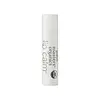What's inside
What's inside
 Key Ingredients
Key Ingredients

No key ingredients
 Benefits
Benefits

 Concerns
Concerns

 Ingredients Side-by-side
Ingredients Side-by-side

Water
Skin ConditioningGlycerin
HumectantButylene Glycol
HumectantButylene Glycol Dicaprylate/Dicaprate
EmollientPentaerythrityl Tetraisostearate
EmollientVinyldimethicone
Cetyl Ethylhexanoate
EmollientNiacinamide
SmoothingC14-22 Alcohols
Emulsion StabilisingPhenyl Trimethicone
Skin ConditioningBehenyl Alcohol
EmollientHydrogenated Vegetable Oil
EmollientStearic Acid
CleansingArachidyl Alcohol
EmollientGlyceryl Caprylate
EmollientC12-20 Alkyl Glucoside
EmulsifyingCetearyl Alcohol
EmollientCaprylyl Glycol
EmollientArachidyl Glucoside
EmulsifyingCarbomer
Emulsion StabilisingArginine
MaskingPalmitic Acid
EmollientAllantoin
Skin ConditioningSilica
AbrasivePolyacrylate-13
Ammonium Acryloyldimethyltaurate/Vp Copolymer
Tocopherol
AntioxidantHydrogenated Lecithin
EmulsifyingEthylhexylglycerin
Skin ConditioningAdenosine
Skin ConditioningHydrogenated Polyisobutene
EmollientCeramide NP
Skin Conditioning1,2-Hexanediol
Skin ConditioningTocopheryl Acetate
AntioxidantCholesterol
EmollientSqualane
EmollientBisabolol
MaskingMacadamia Ternifolia Seed Oil
EmollientDimethicone
EmollientPolyglyceryl-10 Laurate
Skin ConditioningEthylhexyl Palmitate
EmollientOctyldodecanol
EmollientGlucose
HumectantBrassica Campestris Sterols
EmollientOleic Acid
EmollientSorbitan Isostearate
EmulsifyingT-Butyl Alcohol
PerfumingArachidic Acid
CleansingSodium Hyaluronate
HumectantRibes Nigrum Seed Oil
EmollientMyristic Acid
CleansingGlutathione
Caesalpinia Spinosa Fruit Extract
Skin ProtectingAsiaticoside
AntioxidantMadecassic Acid
Skin ConditioningAsiatic Acid
Skin ConditioningHelianthus Annuus Seed Oil Unsaponifiables
EmollientKappaphycus Alvarezii Extract
Skin ConditioningLactobacillus Ferment Lysate
Skin ConditioningLactobacillus Ferment
Skin ConditioningHelianthus Annuus Seed Oil
EmollientCardiospermum Halicacabum Flower/Leaf/Vine Extract
Skin ConditioningRosmarinus Officinalis Leaf Extract
AntimicrobialWater, Glycerin, Butylene Glycol, Butylene Glycol Dicaprylate/Dicaprate, Pentaerythrityl Tetraisostearate, Vinyldimethicone, Cetyl Ethylhexanoate, Niacinamide, C14-22 Alcohols, Phenyl Trimethicone, Behenyl Alcohol, Hydrogenated Vegetable Oil, Stearic Acid, Arachidyl Alcohol, Glyceryl Caprylate, C12-20 Alkyl Glucoside, Cetearyl Alcohol, Caprylyl Glycol, Arachidyl Glucoside, Carbomer, Arginine, Palmitic Acid, Allantoin, Silica, Polyacrylate-13, Ammonium Acryloyldimethyltaurate/Vp Copolymer, Tocopherol, Hydrogenated Lecithin, Ethylhexylglycerin, Adenosine, Hydrogenated Polyisobutene, Ceramide NP, 1,2-Hexanediol, Tocopheryl Acetate, Cholesterol, Squalane, Bisabolol, Macadamia Ternifolia Seed Oil, Dimethicone, Polyglyceryl-10 Laurate, Ethylhexyl Palmitate, Octyldodecanol, Glucose, Brassica Campestris Sterols, Oleic Acid, Sorbitan Isostearate, T-Butyl Alcohol, Arachidic Acid, Sodium Hyaluronate, Ribes Nigrum Seed Oil, Myristic Acid, Glutathione, Caesalpinia Spinosa Fruit Extract, Asiaticoside, Madecassic Acid, Asiatic Acid, Helianthus Annuus Seed Oil Unsaponifiables, Kappaphycus Alvarezii Extract, Lactobacillus Ferment Lysate, Lactobacillus Ferment, Helianthus Annuus Seed Oil, Cardiospermum Halicacabum Flower/Leaf/Vine Extract, Rosmarinus Officinalis Leaf Extract
Helianthus Annuus Seed Oil
EmollientBeeswax
Emulsion StabilisingOlea Europaea Fruit Oil
MaskingSimmondsia Chinensis Seed Oil
EmollientCitrus Reticulata Peel Oil
MaskingHelianthus Annuus Seed Oil, Beeswax, Olea Europaea Fruit Oil, Simmondsia Chinensis Seed Oil, Citrus Reticulata Peel Oil, Citrus Limon Peel Oil, Citrus Aurantifolia Oil, Linum Usitatissimum Seed Oil, Borago Officinalis Seed Oil, Rosa Moschata Seed Oil, Limonene, Linalool, Geraniol, Citral, Citronellol
 Reviews
Reviews

Ingredients Explained
These ingredients are found in both products.
Ingredients higher up in an ingredient list are typically present in a larger amount.
Helianthus Annuus Seed Oil is the oil derived from the seeds of a Sunflower. Sunflower seed oil is non-fragrant. It is an emollient, meaning it helps to soften the skin.
Sunflower seed oil contains many fatty acids. The fatty acids found in sunflower seeds include (from highest amount to least): linoleic acid, myristic acid, palmitic acid, stearic acid, arachidic acid, oleic acid, and linolenic acid.
These fatty acids help the skin create ceramides. Ceramides play a role in repairing the skin barrier.
Helianthus Annuus Seed Oil helps moisturize the skin. This in turn helps the skin look more rejuvenated and smoother.
Sunflowers are rich in vitamin E.
Historians believe Indigenous cultures of North America domesticated sunflowers before corn. Thus they relied on sunflower oil for a variety of uses. One such use is moisturizing skin and hair.
Sunflower seed oil may not be fungal acne safe. We recommend speaking with a professional if you have any concerns.
Learn more about Helianthus Annuus Seed Oil